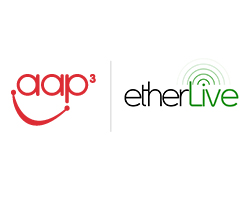Last week I was lucky enough to visit one of our customer deployments providing site wide high speed Wi-Fi for a leading retailer who was launching (hold your breath) their Christmas range to the worldwide media
Mistletoe, fake snow and Santa hats seem funny against a sunny London day but it did remind me that Christmas comes all to quickly and those preparing events are already well into planning
As that planning takes place our 4 key questions for Christmas;
How will payment be taken?
Last year we saw a large uptick in events looking to guarantee payment transactions. GPRS terminals can struggle during busy events or when indoors so many are using products like iZettle [https://www.izettle.com/gb] or chip and pin terminals powered by a local network.
How will security be maintained?
Nothing replaced highly trained, focused, security teams but CCTV systems can provide crucial evidence if required. Systems can now be deployed wirelessly monitoring those that enter and exit as well as general activity. Systems can be set to automatically ‘tour’ so don’t need to be actively monitored. High definition level images mean the important details can be captured and remote access means those who need images can quickly download the data.
How can footfall be increased?
The demand for ‘public’ wifi continues to increase as those at events look to settle down with a drink (coco?) and enjoy the atmosphere. Using Wi-Fi hotspots in areas can drive traffic or get those on site to stay a little longer and spend that little extra
How do you know many people visited?
Clicking people in remains the order of the day for most events but intelligent counting systems have increased in simplicity and can provide highly granular reporting against the various times or day and most popular access areas. Useful for those looking to build a profile of the event for sponsors or activations and those managing staff allocation.
So far the summer season is priority number one but before we know it Christmas is upon us.






